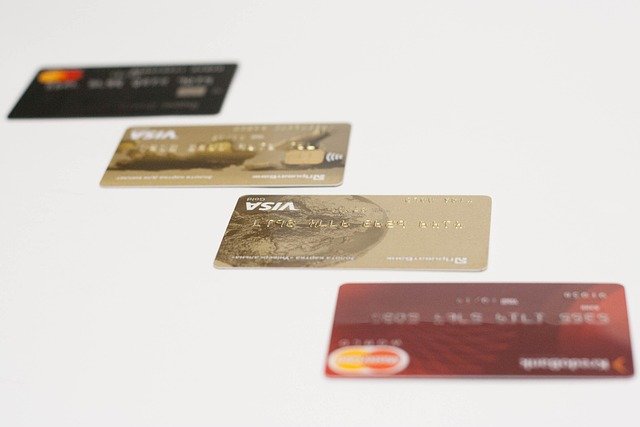Smart Credit Card Selection: Your Complete Guide
Choosing the right credit card can significantly impact your financial well-being and daily spending power. With hundreds of options available, finding the card that matches your lifestyle and spending habits requires careful consideration of features, benefits, and costs. Whether you're building credit, maximizing rewards, or seeking better financial flexibility, understanding your options helps you make informed decisions that align with your personal financial goals.

What Makes a Credit Card Right for Your Lifestyle?
Your ideal credit card should complement how you actually spend money. If you’re a frequent traveler, cards offering travel rewards, airport lounge access, and no foreign transaction fees provide genuine value. For families focused on everyday expenses, cashback cards that reward grocery, gas, and dining purchases often deliver better returns. Students and those building credit might prioritize cards with lower qualification requirements and educational resources over premium rewards programs.
Consider your monthly spending patterns and payment habits. Heavy spenders who pay balances in full benefit most from rewards cards, while those carrying balances should prioritize low interest rates over reward earnings. Your credit score also influences available options, with excellent credit opening doors to premium cards and better terms.
How to Discover Flexible Credit Options Available in Your Area?
Credit card availability varies by location, with some regional banks and credit unions offering competitive local options alongside national providers. Start by checking offerings from local financial institutions where you already have relationships, as existing customers often receive preferential rates and terms. Many regional banks provide personalized service and more flexible approval criteria than large national issuers.
Online comparison tools help identify cards available in your specific area, though most major credit cards are available nationwide. Some credit unions offer particularly attractive terms but require membership based on employment, location, or family connections. Research community development financial institutions in your area, which sometimes provide credit-building products for those with limited credit history.
Which Simple Tools Help Compare, Apply, and Start Saving Smarter?
Credit card comparison websites aggregate offers from multiple issuers, allowing side-by-side feature comparisons. Look for tools that let you filter by credit score range, card type, and specific benefits. Many sites offer pre-qualification tools that show likely approval odds without affecting your credit score through hard inquiries.
Bank and credit union websites often feature their own comparison tools highlighting their card portfolio. Mobile apps from financial institutions frequently include budget tracking features that integrate with your credit card spending, helping identify which reward categories would benefit you most. Always verify terms directly with issuers, as third-party sites may not reflect current promotions or updated terms.
What Are the Main Types of Credit Cards Available?
Credit cards fall into several primary categories, each serving different financial needs. Rewards cards include cashback options offering flat rates or rotating categories, and travel cards providing miles or points for redemptions. Cashback cards typically offer 1-2% on all purchases or up to 5% in specific categories like groceries or gas stations.
Balance transfer cards feature promotional 0% APR periods for moving existing debt, while low-interest cards maintain consistently lower ongoing rates. Secured cards require deposits and help build credit, making them ideal for newcomers to credit or those rebuilding after financial difficulties. Business cards offer expense tracking and higher credit limits for entrepreneurs and business owners.
What Credit Card Features Matter Most in the United States?
American credit card users should prioritize fraud protection, which federal law limits liability to $50 for unauthorized charges. Most major issuers offer zero liability policies exceeding legal requirements. Credit monitoring services help track score changes and alert users to potential identity theft, increasingly important given data breach frequency.
Many US cards now offer contactless payment technology for faster, more secure transactions. Purchase protection and extended warranty coverage add value for major purchases. Some cards provide cell phone insurance, rental car coverage, or purchase price protection. Annual fee cards often include premium benefits like airport lounge access, statement credits for travel purchases, or concierge services that can offset their costs for frequent users.
How Do Credit Card Costs Compare Across Major Providers?
Understanding credit card costs helps you choose options that minimize fees while maximizing benefits. Interest rates typically range from 15% to 29% APR for most cards, with premium rewards cards often carrying higher rates. Balance transfer cards may offer 0% promotional rates for 12-21 months, then revert to standard rates.
| Card Type | Provider Examples | Annual Fee Range | APR Range | Key Features |
|---|---|---|---|---|
| Cashback Cards | Chase Freedom, Discover it | $0-$95 | 16%-24% | 1-5% cashback, rotating categories |
| Travel Rewards | Chase Sapphire, Capital One Venture | $95-$550 | 17%-26% | Points/miles, travel benefits |
| Balance Transfer | Citi Simplicity, BankAmericard | $0-$39 | 0%-25% | Promotional 0% APR periods |
| Premium Cards | American Express Platinum, Chase Reserve | $450-$695 | 18%-27% | Luxury perks, high rewards |
| Secured Cards | Capital One Secured, Discover Secured | $0-$39 | 22%-27% | Credit building, low deposits |
Prices, rates, or cost estimates mentioned in this article are based on the latest available information but may change over time. Independent research is advised before making financial decisions.
Making Your Final Credit Card Decision
Selecting the right credit card requires balancing costs, benefits, and your specific financial situation. Start by listing your top three spending categories and monthly payment capacity. Compare cards that reward your highest spending areas while considering annual fees and interest rates based on whether you carry balances.
Apply for cards within your credit score range to avoid unnecessary hard inquiries that temporarily lower your score. Once approved, use your card responsibly by keeping utilization below 30% of your credit limit and paying bills on time. Regular account monitoring and strategic usage help build credit while maximizing the financial benefits your chosen card provides.




